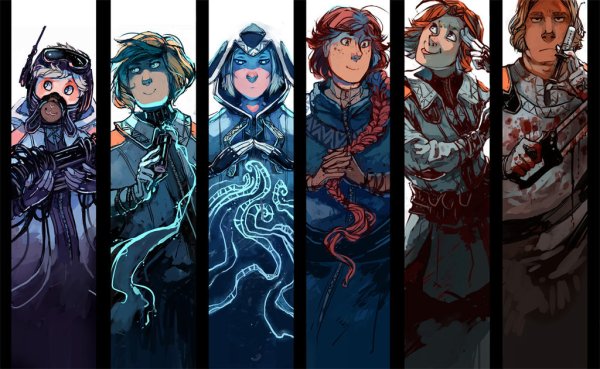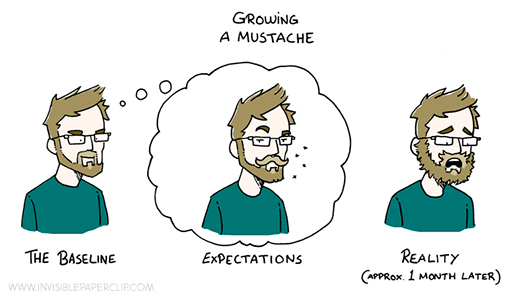Disclaimer: This post, contrary to my promise of posting part two of my adventures in Japanese bureaucracy, is about sexism and feminism. I see the topic as being slightly more important than my original intended one. (Though I will get to that one eventually.) This post is long, and probably not interesting to anyone other than me. But I’m writing it, and sharing it, as the first step in my personal journey as a feminist.
Background:
I grew up in a really nasty neighborhood. My house was literally right next to an elementary school, and yet on a nightly basis you could find prostitutes (both male and female) on the corner. Sometimes they’d get their customers to park in our driveway while they worked. We’d also get drug dealers, people lurking around our yard to look for anything worth stealing, and at one point a high-profile criminal taking a shortcut through our property to lose the police. Said man, who had been arrested for shooting an eight-year-old, had escaped his handcuffs. He then went on to gun down three officers, steal a car, lead a chase to a highway convenience store, and then shoot himself in the head. He’d been our neighbor for several years.
Okay, so I grew up in a world of crazy. That can be easily agreed on, right?
And yet somehow I remained totally ignorant to a much more common issue. Just because somehow it had never happened to me before.
That’s not to say I didn’t consider myself a feminist. At least once a week I look at posts about everything from subconscious female anti-feminism to blatant male misogyny, in the form of blogs, articles, comics, forum conversations, and Upworthy videos. I knew about things like male entitlement issues, objectification, and women only being “off limits” if they “belonged” to someone else — but I didn’t see it in my own environment. I felt angry, I wanted justice for the women involved. But the experiences I was reading and watching about were all second-hand. Though I didn’t deny that these things happened, I incorrectly assumed that because they had never happened to me, and because none of my female friends had ever confided such experiences to me, that they weren’t nearly so rampant as social media implied.
The Incidents:
Let me reiterate: in my 26 years of life, living in Miami, Korea, and Japan, even visiting places like Cambodia and Thailand, I had never run into any kind of sexism-fueled problem that actually scared me. Sure, I’d gotten looks when wearing anything remotely form-fitting, I’d had guys come up to tell me I was pretty, or to ask me out for drinks. And, okay, I had something like a stalker for a while, who liked to pretend he didn’t get that I wasn’t interested — but though he made me feel uncomfortable to be around, I was never scared of him. Now I see it for what it was, but I guess because the situation developed so differently, it didn’t really feel like objectification back then. For such a persistent person, he had more respect for me than either of the guys I ran into the other night.
I now live in Osaka, if you’re reading this as a first-time visiter. And compared to Miami, I’d always felt that Japan was infinitely safer, and full of people who actually respect others. As for fashion, the girls here always keep their shoulders covered, but love exposing their legs. You see thighs everywhere here, at all hours of the day. Sitting in Starbucks right now, I’m seeing as much girl-thigh as you might see at Miami Beach.
I usually don’t wear short dresses, though. In Miami, tank tops and “booty shorts” are the norm and don’t really get second looks, but I’ve always considered myself a modest dresser, even by Osaka standards.
But, since the night in question was a rare night off from work as well as my friend T’s birthday, I donned something a little longer than the typical Osaka chic and went out. My friend was dressed similarly.
The first incident was really minor in comparison. A Japanese guy came up and tried to invite us out for drinks, among other things. I was smart enough to say that we couldn’t speak Japanese, and T used what I’ve since learned is the ultimate line of defense against such things: “We have to meet our boyfriends now.”
He immediately backed off — can’t mess with another man’s girl, right?
Incident two happened after we’d joined up with two guy friends (neither of whom was actually my boyfriend). T was walking right next to me in a crowded junction, the guys up ahead. A stranger brushed past me — and I felt his hand more or less grab me in a place it had no business being.
I was in shock. I’d always imagined such situations on crowded trains, and pictured myself turning and punching the guy and screaming “Pervert!” But in real life I couldn’t move. In fact I almost laughed in denial that it had happened at all. And even though I could point out exactly who had been the culprit, he was already halfway down the crowded street by the time I turned around. There was no police officer in sight, and even if there had been, I understood right away that there was nothing to do. I was a foreigner (that alone would likely get me waved off) and wearing a dress that, though in line with Japanese standards, was short enough to be considered “asking for it.” Suddenly I understood a lot more of the feminism posts I’d been reading online.
But that wasn’t the end of it.
The Incident that could have gone seriously wrong:
That same night, I was lucky enough to catch the very last train from Tennouji to my home station. I was feeling really relieved, because while I live in a nice community, the area just around Tennouji has some dangerous territory (by Japanese standards) and I did not feel like trying to navigate through it for the first time at one in the morning. But from my station to my apartment, I had never felt even a twinge of suspicion that something might happen.
And yet that night, as I climbed the stairs to my room in a building that mostly housed retirees who conked out by 9pm, I knew someone was following me. Every time I paused to look down at the next level, he also paused — sometimes ducking out of sight, sometimes staring back up at me as though trying to convince me he wasn’t anyone suspicious.
When I stopped at my floor, a little out of sight, to catch him, he made his intentions clear by guiltily trying to hurry back downstairs.
In Japanese, I asked, “Do you live here?”
Now, I suppose I could give him points for honesty, because the closest translation of his reply would be, “No, it’s just that you caught my eye.”
But that comment made me angry before I could even understand why. And my friends all know, I don’t anger easily. Even my closest friends have seen me like that only once, and say they were terrified. So when I told this guy to go home, I could tell there was nothing else he’d rather do in that moment. He flashed me a nervous smile and a thumbs up, and then disappeared.
Now, he wasn’t a scrawny guy. If he’d wanted to, he could’ve easily overpowered me. But his personality, if I can judge from that short interaction, seemed to be gentle and even honest. Had we met on the street, I would have taken him for a regular, probably decent person.
So why did he think it was okay to follow me back to my room? Why did he see nothing wrong or even strange about it? What was he even hoping to achieve by doing so?
And his reason — because I caught his eye. Did my wearing a short dress actually make him think he had any right to carry out, or would benefit in any way from, his behavior?
Getting to the point:
When I told this story to a close male friend, the first thing he said was “Please don’t wear short dresses anymore.” He acknowledged that women shouldn’t have to take precautions against men, but also said that that wasn’t the point.
According to him, the point was that this is the kind of world we live in: a world in which men assume that women belong to men, that we dress up solely for the attention of men, and that wearing anything they find attractive is an invitation to do whatever they want, regardless of what we communicate through actual words or other actions.
So I should wear concealing clothes in the middle of summer to avoid looking attractive? I should dye my hair black so I don’t immediately stand out as a foreign woman (considered more “loose” than Asian women)? Should I just give up and start wearing a burka, or should I go so far as to get a sex change so I can stop being the assumed property of men?
I’ve now gone through a night in which a single instance of wearing a certain dress brought on three separate incidents of sexual harassment, which only worsened in scale. And in the aftermath I witnessed one of the most thoughtful and sensitive men I know cater to the idea that it’s a woman’s responsibility for making sure she doesn’t get sexually harassed.
But that’s exactly the line of thinking I used to follow: “If you don’t wear revealing clothes, you shouldn’t have any problems. I never did.” After all, by a similar token isn’t it your own fault if you get stabbed walking through a dangerous neighborhood at night? (Red alert: This is a sarcastic question!)
Now I understand that that way of thinking is archaic. In Victorian times, it was considered scandalous for a woman to show ankle. We’ve moved past that, but just because the idea of what’s sexy has changed doesn’t mean that all men’s attitudes towards women have. Maybe in the future we’ll be able to run around in panties and bras and not be “asking for it,” — but not necessarily because that kind of man will be any more respectful; it will be because of a new extreme for them to latch onto. “She was wearing a strapless bra and all the girls around her were wearing straps. She was asking to be felt up!”
It makes me all the more grateful to men (and women) who are feminists — and who were feminists long before I ever saw the need to be one myself.




